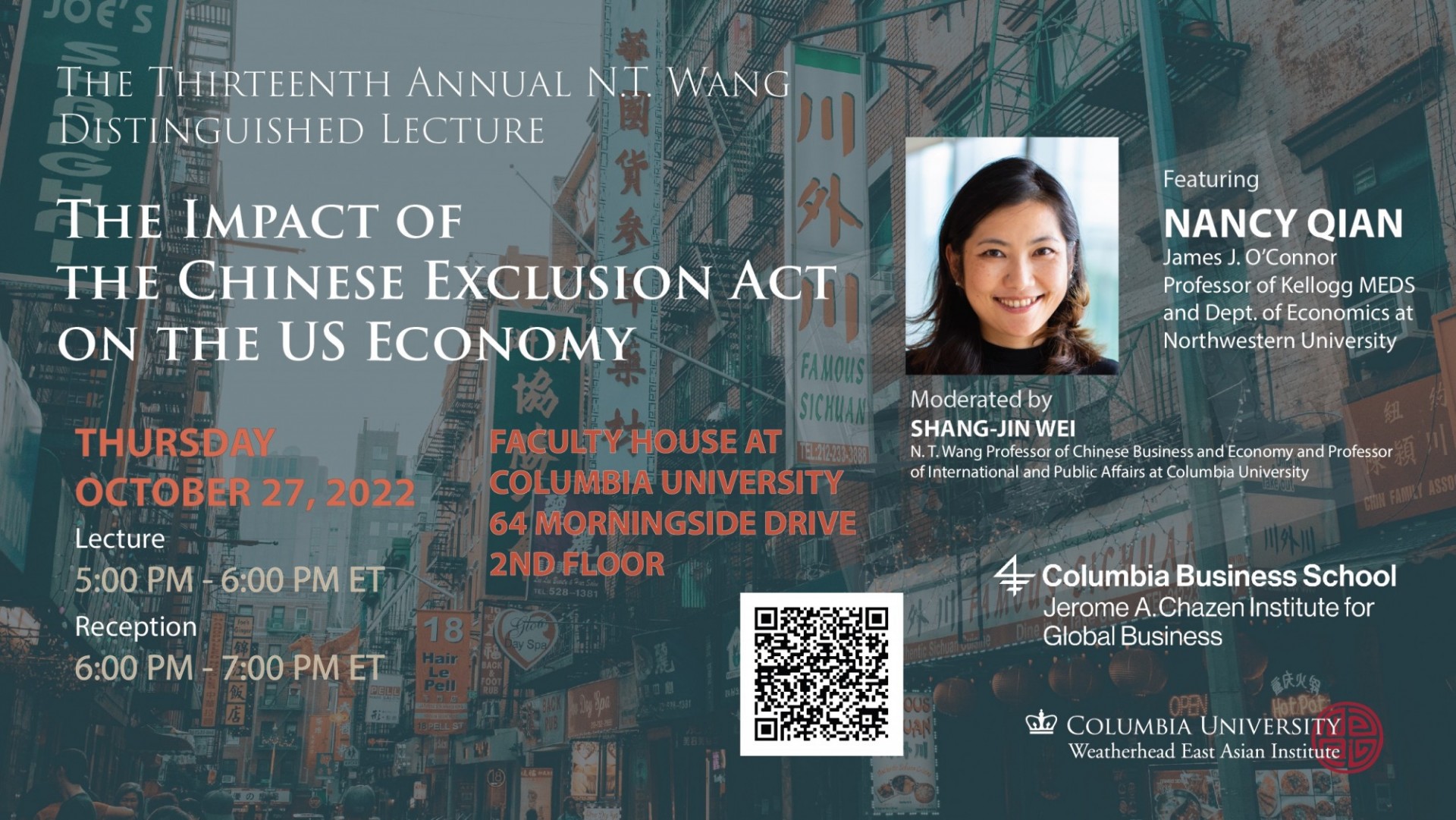Nancy Qian Underscores Economic Damages of the Chinese Exclusion Act in Thirteenth Annual NT Wang Lecture
In an October 27 lecture, guest speaker Nancy Qian, James J. O’Connor Professor of Kellogg MEDS at Northwestern University, shared her research on the Chinese Exclusion Act of 1882, highlighting the overall negative economic impacts of the law. Despite its historical nature, it was a timely discussion with parallels to the present day, as rising Sinophobia and fraught US-China relations have influenced decoupling policies and the recent trade war.
The Chinese Exclusion Act of 1882 was the first immigration ban of an entire ethnic group or country of origin in the US. Qian explained that when the US experienced a recession in the 1870s, white Americans accused the Chinese––who made up less than 1 percent of the entire US population––of stealing their jobs. The act was extremely popular across all states and political leanings, and it remained in effect until 1965.
According to Qian, the Chinese, primarily men of working age, started immigrating to the US in the 1850s, first working in the gold mines and then on the Transcontinental Railroad. After the railroad’s completion, they became highly concentrated in specific sectors, such as mining, agriculture, millinery, and even salmon canneries. They resided primarily in the Western US, making up 12 percent of the labor force. When Qian explained her econometric analysis, she emphasized how their geographical and sectoral concentration was a key factor in determining the act’s economic impact.
While other studies on the act research the law’s effect on the Chinese, Qian focused on the act’s effect on white Americans, whom the policy was intended to benefit, and on the US economy as a whole. Upon analyzing census data from the 1880s to 1940s, the findings unexpectedly showed that “the [counties] that had a lot of Chinese in 1880 experienced much slower growth in the white labor force and white employment for every single sector, compared to the [counties] that didn’t have any Chinese to begin with.”
Qian also compared the Western US’s economic trends to those of the eastern US, where European immigrants continued to settle even after the ban. She found that the economy grew along most metrics, suggesting that had Chinese migrants not been banned, the west’s economy would have also grown. There was a permanent decline with no rebound across the census data even as late as the 1940s. Overall, Qian concluded that the act negatively affected everyone in the regions where Chinese migration was previously prominent.
Qian’s main motivation for this lecture was to connect this historical experience to current events, such as recent discussions of restricting entry into the US and Western Europe. She emphasized that now is an important time for “furthering our understanding of the Chinese economy and the long run relationship between China and the US.” The policymakers of the time made an erroneous decision by not considering the Chinese workers’ influence and overestimating how easy it would be to replace them, Qian deduced. She suggested that, through understanding the effects of the Chinese Exclusion Act, modern policymakers can make more conscious decisions for the US’s economic interests.
The October 27 event, hosted by WEAI and the Jerome Chazen Institute for Global Business, marked the thirteenth Annual N.T Wang Distinguished Lecture. Shang-Jin Wei, N. T. Wang Professor of Chinese Business and Economy and Professor of International and Public Affairs at Columbia University, moderated the talk and introduced the event by lauding the accomplishments of the series’ namesake. Cynthia Wang, daughter of N.T Wang, also attended.

